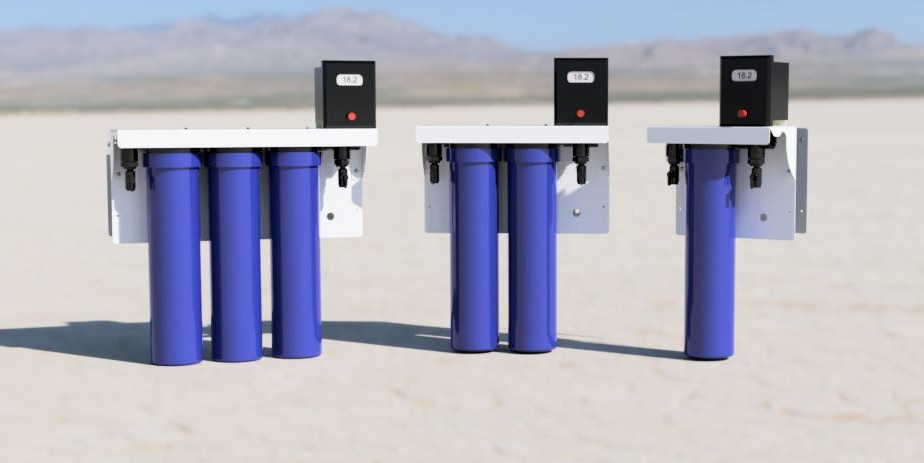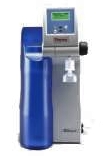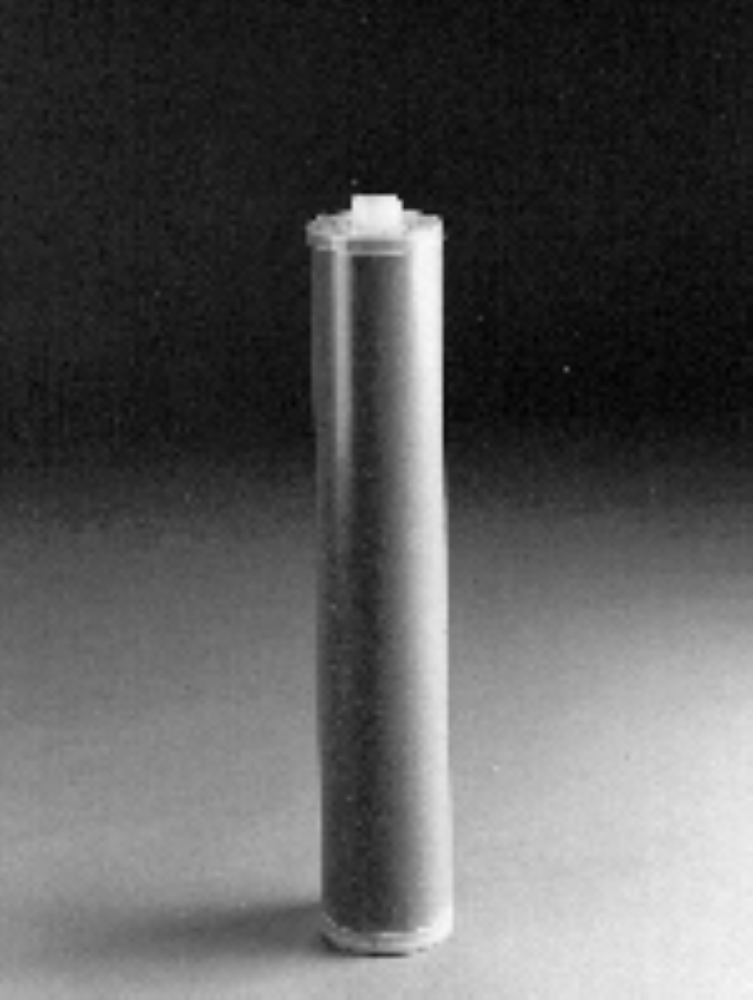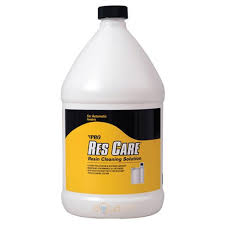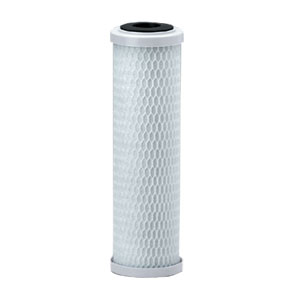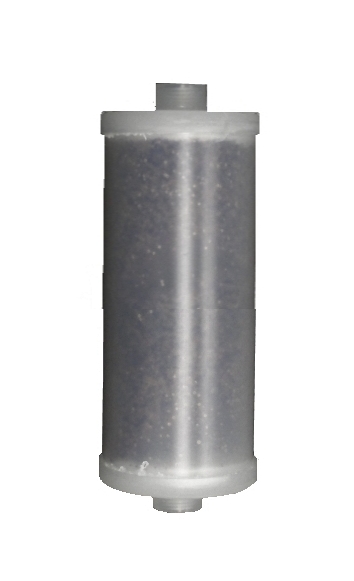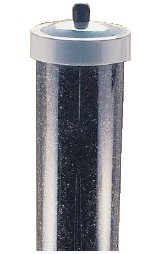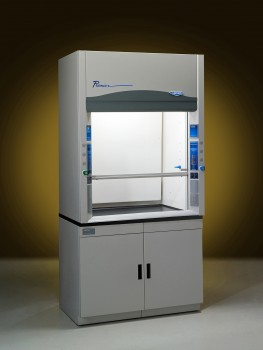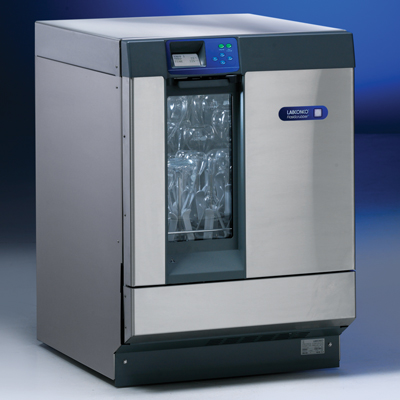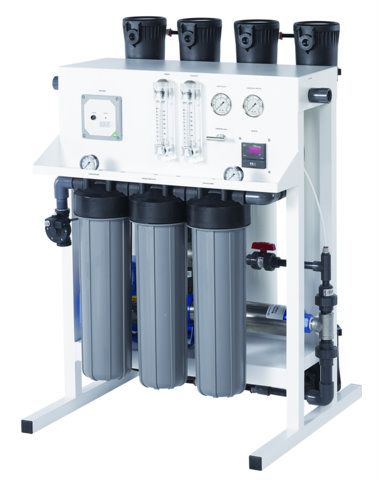Q: What is most of the freshwater in the U.S. used for?
A: In 2000, about 346,000 million gallons per day of fresh water was withdrawn from our surface- and ground-water sources, such as rivers, lakes, reservoirs, and wells. Would you think that two uses of water, irrigation and thermoelectric-power production, would account for about 79 percent of water used in 2000? Here's the breakdown by water-use category:
Irrigation: 40 percent
Thermoelectric power: 39 percent
Public Supply: 13 percent
Industry: 5 percent
Livestock, aquaculture: less than 1 percent
Domestic (self-supplied): 1 percent
Mining: 1 percent
In a way, the large amount of water used for power production (electricity) is deceiving. It is mostly used to just cool the heated power-production equipment. The vast majority of the water used by power plants is returned to the environment, and thus is available for other uses.
Q: Which states use the most water?
A: In 2000, California alone accounted for almost 11 percent of all freshwater used in the United States. After California was Texas, Idaho, and Illinois, which together accounted for 28 percent of all fresh water used in the U.S. Most of the water used in California was for crop irrigation. In fact, 22 percent of all the Nation's irrigation water used was in California, which indicates how important agriculture is there. Florida also is a large food producer but because it gets a lot more summer rainfall than the Central Valley of California, there is less need to apply irrigation water.
The three most populated states, California, Texas, and New York accounted for 30 percent of all water withdrawn for public-supply uses (for example, a city/county withdrawing water and delivering it to our homes and businesses). Texas, Wyoming, and Oklahoma used the most water for mining purposes, and California, Michigan, and Florida used the most water for household (domestic) purposes.
Q: Which states used the most water for irrigation?
A: Agriculture is a big business in the United States, and a lot of water is used to produce our food. In 2000, farmers used water to irrigate about 61,900,000 acres of land. That is about 96,700 square miles, which you can think of as a big, square plot of land about 311 miles on a side. And that is only the land that was irrigated; other land produced crops without the use of irrigation.
As expected, California led the Nation in acres irrigated, about 10,100,000, which was over 16 percent of the national total. Nebraska was next, irrigating about 7,420,000 acres, followed by Texas at about 6,490,000 acres. Agricultural irrigation is much more prevalent in the arid Western United States than in the East. The Western U.S. accounts for the majority of irrigation water use.
Q: Where does irrigation water come from and how is it applied to the land?
A: Both ground water and surface water are used for irrigation. In 2000, about 56,900 million gallons per day were withdrawn from the ground for irrigation, whereas about 89,700 million gallons per day were taken from surface-water sources. A small amount of treated (reclaimed) wastewater coming from sewage-treatment plants was used for irrigation (no, not on food crops!). It mainly is applied to golf courses and public areas, such as parks and road medians.
The USGS keeps records on the types of irrigation systems used in the United States:
Flood irrigation: water is poured onto the land and flows through fields
Spray irrigation: water is sprayed from spray guns or sprinkled onto fields
Drip (micro) irrigation: water is slowly dripped from small pipes onto crops
In 2000, about 29.4 million acres of the 61.9 million total irrigated acres (about 47 percent) were irrigated by the flood irrigation process. Another 28.3 million acres were spray irrigated, with the remaining 4.2 million acres received drip irrigation.
Q: How much water is used to produce power in the U.S.?
A: The United States produces a lot of electrical power, and water is important in that production. In 1995, there were about 2,690,000 billion watthours (gigawatt hours) of power produced by thermoelectric power plants (those plants that burn oil, gas, and coal, use geothermal energy, or use nuclear energy). Hydroelectric power plants (falling water spins a turbine to produce power) accounted for another 310,000 gigawatt hours of power.
In 2000, about 136,000 million gallons of fresh water and 59,500 million gallons of saline water each day were used in the thermoelectric power-production process. Why do power plants need so much water? Mainly it is used to cool the reactors of nuclear plants, and for condenser cooling in fossil-fuel (such as coal, oil, etc.) power plants. Incidentally, well over 99 percent of water used is from surface-water sources, rather than from ground-water sources. In fact, most power plants are located near a surface-water body so they can have easy access to large amounts of water.
Q: Does the U.S. produce any power using natural steam energy?
A: Yes, but not very much. In 1995, power produced by using the earth's steam, called geothermal power, totaled about 6,100 gigawatt hours, which is about 0.2-percent of the Nation's total power production. Only about 59 million gallons per day of water was used in this process. Iceland makes great use of its geothermal resources.
Q: What about hydroelectric power?
A: Power produced by hydroelectric plants was a significant source of energy for the U.S. in 1995. About 310,000 gigawatt hours of power was produced, which was about 12 percent of the Nation's total power output. Hydroelectric power is an "instream use" of water, that is, water flowing in a river or from a reservoir is used to turn a turbine to produce energy, so water is not actually "withdrawn." You can imagine that not every state can make use of hydro power because the water actually has to fall from a high altitude to a low altitude to produce power (although water can be pumped back uphill to be used again in some cases). The generally flat state of Florida does have a hydro plant, though!
Q: Water is used for "fish farming?" The U.S. grows fish?
A: You mean you've never eaten farm-raised catfish, or a trout from a "trout farm?" Fish farming is a big business in some places. There are large catfish farms in Arkansas and Mississippi. In 2000, Idaho used about 1,970 million gallons of water per day to grow trout, and accounted for a large percentage of the world's farm-raised trout. In Louisiana, more than 50 times more water is used for fish farming than is used for animals that produce meat, poultry, and milk.
Q: Is saline water used for anything?
A: Saline water has some uses. In 2000, the U.S. used about 62 billion gallons per day of saline water, which was about 15 percent of all water used. But saline water can only be used for certain purposes. The main use was for thermoelectric power-plant cooling. As for the other uses, about 8 percent of water used for industrial purposes was saline, and about 43 percent of all water used for mining purposes was saline. Also, saline water can be desalinated for use as drinking water by putting it through a process to remove the salt from the water. The process costs so much that it isn't used very much right now.
Q: How important is ground water?
A: Ground water, which is in aquifers below the surface of the Earth, is one of the Nation's most important natural resources. Ground water is the source of about 37 percent of the water that county and city water departments supply to households and businesses (public supply). It provides drinking water for more than 90 percent of the rural population who do not get their water delivered to them from a county/city water department or private water company. Even some major cities, such as San Antonio, Texas, rely solely on ground water for all their needs. About 42 percent of the water used for irrigation comes from ground water. Withdrawals of ground water are expected to rise as the population increases and available sites for surface reservoirs become more limited.
|
